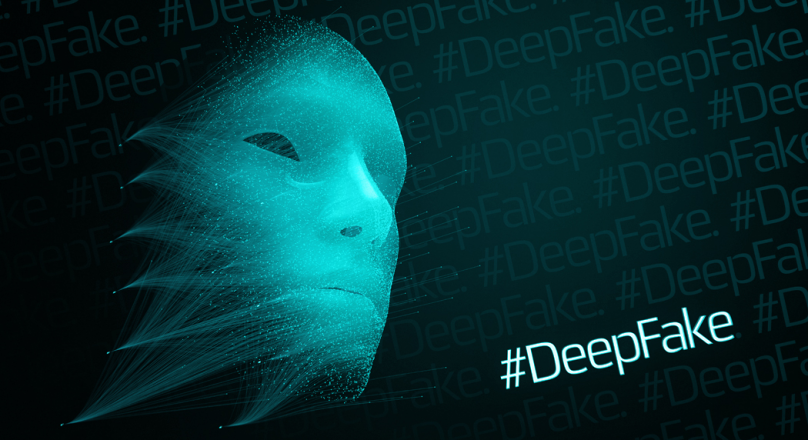Your cart is currently empty!
Deepfake
Deepfake : A Boon Or Bane

Understanding Deepfake Technology: The Evolution, Implications, and Future
Deepfake technology, which leverages artificial intelligence (AI) and machine learning to create highly realistic but fabricated audio and visual content, has become a significant topic of discussion in recent years. While the technology has legitimate applications in entertainment, education, and creativity, it also raises serious ethical and security concerns. This article explores the origins of deepfake technology, its applications, implications, and the measures being taken to mitigate its potential risks.
What Are Deepfakes?
Deepfakes refer to synthetic media in which a person’s likeness is replaced with that of another person. The term is a portmanteau of "deep learning" and "fake." This technology uses deep learning techniques, particularly generative adversarial networks (GANs), to produce realistic forgeries. GANs consist of two neural networks: a generator that creates fake content and a discriminator that evaluates its authenticity. This interplay allows the generator to refine its output until it achieves a level of realism that can be difficult to distinguish from genuine content.
Evolution of Deepfake Technology
Deepfake technology has its roots in advancements in AI and computer vision. Initial experiments began in the early 2010s, but it gained mainstream attention around 2017 when a Reddit user posted manipulated videos featuring celebrities. This sparked a wave of interest and concern regarding the potential misuse of the technology.
Since then, the technology has advanced rapidly, making it easier for individuals to create deepfakes without extensive technical knowledge. Various apps and software now allow users to produce their own deepfake videos with just a few clicks, leading to a proliferation of both harmless and harmful content.
Applications of Deepfake Technology
While deepfakes are often associated with malicious intent, there are several legitimate applications of the technology:
1. Entertainment and Media
Deepfakes have been used in the film industry to create realistic visual effects, resurrecting deceased actors for posthumous performances or allowing actors to play younger versions of themselves. This technology can also enhance storytelling by creating believable digital doubles for stunts or special effects.
2. Education and Training
Deepfake technology can be utilized in educational settings, such as creating interactive simulations or training modules that involve real-life scenarios. For example, it can be used to simulate conversations with historical figures, enhancing learning experiences.
3. Marketing and Advertising
Brands can use deepfake technology to create personalized advertisements, tailoring content to individual consumers. This can help enhance engagement and improve marketing effectiveness.
4. Art and Creativity
Artists and content creators are exploring deepfakes as a new medium for artistic expression, using the technology to experiment with identity, representation, and storytelling in innovative ways.
Implications and Concerns
Despite its potential benefits, deepfake technology poses significant challenges and risks:
1. Misinformation and Disinformation
Deepfakes can be used to create misleading or entirely false content, contributing to the spread of misinformation. This poses a threat to public trust, especially in political contexts, where deepfakes can manipulate public opinion or discredit individuals.
2. Privacy Violations
The ability to create deepfakes of individuals without their consent raises serious ethical questions about privacy and consent. This has led to instances of harassment and defamation, particularly in cases involving non-consensual explicit content.
3. Security Risks
Deepfake technology can be exploited for criminal purposes, including fraud, identity theft, and the manipulation of video evidence. As deepfakes become more convincing, distinguishing real from fake content may become increasingly challenging, posing risks to both individuals and institutions.
Combating Deepfake Threats
As deepfake technology continues to evolve, researchers, technologists, and policymakers are working on various strategies to address its risks:
1. Detection Technologies
Advancements in AI are also being made to develop deepfake detection tools. These technologies analyze digital content for inconsistencies or anomalies that may indicate manipulation. Companies and organizations are investing in research to improve the accuracy and effectiveness of these detection methods.
2. Legislation and Regulation
Governments around the world are beginning to recognize the need for legal frameworks to address the ethical and legal implications of deepfakes. Some jurisdictions have proposed or enacted laws that criminalize the creation and distribution of malicious deepfakes, particularly those that violate privacy rights or incite violence.
3. Public Awareness and Education
Educating the public about deepfake technology and its potential risks is crucial in combating misinformation. Awareness campaigns can help individuals critically evaluate the media they consume and recognize the signs of manipulated content.
The Future of Deepfake Technology
The future of deepfake technology is likely to be shaped by its dual nature: as a tool for creativity and innovation, and as a potential weapon for deception and harm. As the technology becomes more sophisticated, the need for robust ethical standards, effective detection mechanisms, and legal frameworks will be paramount.
In conclusion, while deepfake technology holds promise in various fields, it also presents significant challenges that require careful consideration. By fostering responsible development and use of this technology, society can harness its benefits while mitigating its risks, ensuring that deepfakes do not undermine trust and authenticity in an increasingly digital world.

